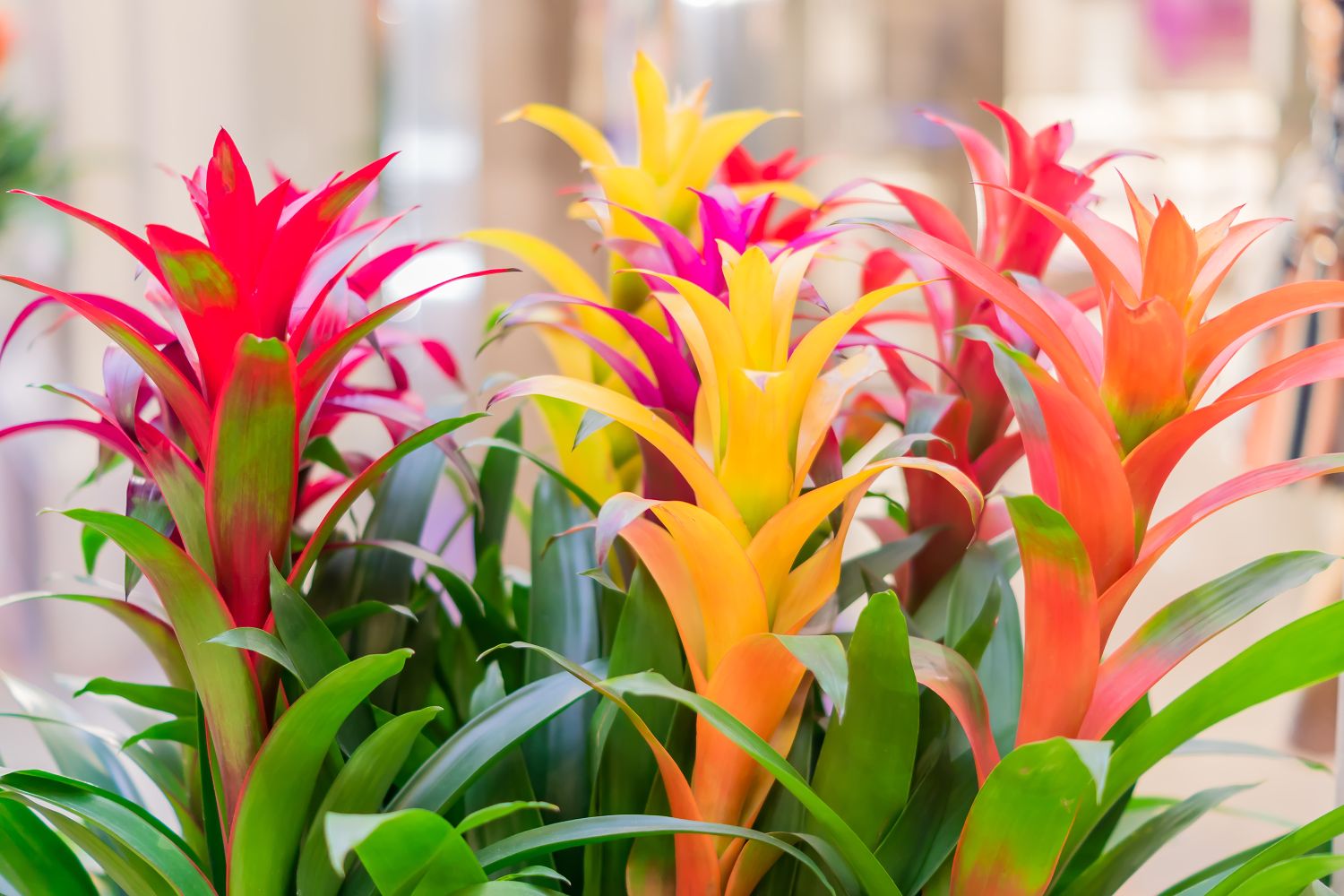
Bromeliads are some of the most fascinating plants you can find. These tropical beauties come in various shapes, sizes, and colors, making them a favorite among plant enthusiasts. But what makes them so special? Bromeliads are not just pretty faces; they have unique features and interesting histories. Did you know that some species can store water in their leaves, creating mini-ecosystems? Or that they can thrive in diverse environments, from rainforests to deserts? Whether you're a seasoned gardener or a curious newbie, learning about bromeliads can be both fun and educational. Ready to dive into the world of these incredible plants? Let's get started!
What Are Bromeliads?
Bromeliads are fascinating plants that belong to the Bromeliaceae family. Known for their striking appearance and unique growth habits, these plants are popular among gardeners and plant enthusiasts. Here are some intriguing facts about bromeliads that will make you appreciate them even more.
-
Bromeliads are native to the tropical Americas, with a few species found in West Africa.
-
The pineapple is the most well-known bromeliad. Yes, that delicious fruit comes from this plant family!
-
Bromeliads can grow on the ground, on rocks, or as epiphytes on other plants. They are incredibly versatile.
-
These plants have a unique way of absorbing water and nutrients through their leaves, not just their roots.
Unique Features of Bromeliads
Bromeliads have several unique features that set them apart from other plants. Their adaptability and resilience make them a favorite among plant lovers.
-
Many bromeliads have a rosette of leaves that form a central "tank" to collect water.
-
Some bromeliads have trichomes, tiny hair-like structures on their leaves, to help absorb moisture from the air.
-
Bromeliads can thrive in low-light conditions, making them perfect for indoor spaces.
-
They come in a variety of colors, including red, orange, yellow, purple, and even blue.
Bromeliad Flowers and Reproduction
The flowers of bromeliads are as captivating as the plants themselves. Their reproduction methods are equally fascinating.
-
Bromeliad flowers can last for several months, providing long-lasting beauty.
-
After flowering, bromeliads produce "pups" or offsets, which can be separated and grown into new plants.
-
Some bromeliads are self-pollinating, while others rely on birds, bats, or insects for pollination.
-
The flowers often have bright colors and unique shapes to attract pollinators.
Bromeliad Care Tips
Caring for bromeliads is relatively easy, but there are some tips to ensure they thrive. Here are some essential care guidelines.
-
Bromeliads prefer well-draining soil to prevent root rot.
-
They need moderate humidity, so misting the leaves can be beneficial.
-
Avoid overwatering; let the soil dry out between waterings.
-
Place bromeliads in indirect sunlight to prevent leaf burn.
Interesting Bromeliad Facts
Bromeliads have some surprising and lesser-known facts that make them even more interesting.
-
Some bromeliads can grow up to 10 feet tall, while others are just a few inches.
-
They have been used in traditional medicine by indigenous peoples for centuries.
-
Bromeliads can help purify the air by removing toxins.
-
They are related to Spanish moss, another member of the Bromeliaceae family.
Bromeliads in the Wild
In their natural habitats, bromeliads play a crucial role in the ecosystem. They provide shelter and resources for various creatures.
-
Bromeliads can create mini-ecosystems in their water tanks, hosting frogs, insects, and even small fish.
-
Some species are adapted to survive in harsh environments, such as deserts or high altitudes.
-
They can grow on tree branches, rocks, or even telephone wires.
-
Bromeliads are often found in rainforests, where they contribute to the biodiversity.
Bromeliads in Culture and History
Bromeliads have made their mark in culture and history, symbolizing beauty and resilience.
-
The Aztecs and Mayans cultivated bromeliads for their beauty and utility.
-
Bromeliads were introduced to Europe in the 18th century and quickly became popular in botanical gardens.
-
In some cultures, bromeliads are considered symbols of protection and good luck.
-
They have inspired artists and designers with their vibrant colors and unique forms.
Fun Facts About Bromeliads
Here are some fun and quirky facts about bromeliads that you might not know.
- Some bromeliads can change color when they are about to bloom, adding an extra layer of excitement for plant enthusiasts.
The Final Word on Bromeliads
Bromeliads are more than just pretty plants. They’re fascinating, adaptable, and easy to care for. Whether you're a seasoned gardener or just starting, these plants can thrive in various environments, from your living room to your backyard. Their unique water-holding capabilities and vibrant colors make them a standout addition to any plant collection. Plus, they’re not just eye candy; they play a crucial role in their ecosystems, providing habitats for small creatures and helping to purify the air.
So, next time you see a bromeliad, remember it’s not just a plant. It’s a tiny ecosystem, a splash of color, and a low-maintenance friend all rolled into one. Happy planting!
Was this page helpful?
Our commitment to delivering trustworthy and engaging content is at the heart of what we do. Each fact on our site is contributed by real users like you, bringing a wealth of diverse insights and information. To ensure the highest standards of accuracy and reliability, our dedicated editors meticulously review each submission. This process guarantees that the facts we share are not only fascinating but also credible. Trust in our commitment to quality and authenticity as you explore and learn with us.
